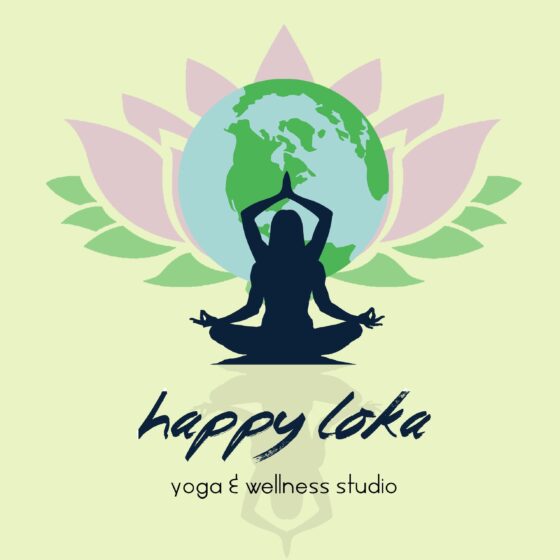Postnatal yoga is a specialized form of yoga that supports new mothers in the weeks and months after giving birth. This practice aims to help women regain physical strength, emotional balance, and overall well-being. With gentle movements, mindful breathing, and relaxation techniques, postpartum yoga can play a key role in a mother’s recovery process.
Benefits Of Postpartum Yoga
Postpartum yoga offers some benefits tailored to the unique needs of new mothers. One of the key benefits is promoting physical recovery. During pregnancy, the abdominal muscles stretch, the back can feel extra pressure, and the pelvic floor can weaken. Postpartum yoga includes specific exercises that target these areas, helping to restore core strength, improve posture, and increase overall muscle tone. For example, gentle yoga poses such as bridge poses can activate and strengthen the glutes and lower back, while plank variations help tone the abdominal muscles. Targeted pelvic floor exercises, such as Kegels, can help restore muscle tone, improve bladder control, and support overall pelvic function.
In addition to physical recovery, postpartum yoga has significant emotional benefits. The postpartum period can be a time of heightened emotional stress due to hormonal fluctuations, lack of sleep, and the demands of caring for a newborn. Yoga techniques such as deep breathing and mindfulness can help alleviate stress and anxiety. The practice of “ujjayi breathing,” a controlled deep breathing technique, has been shown to activate the parasympathetic nervous system, promoting relaxation and reducing stress hormones such as cortisol in the body. It can help new mothers achieve a state of peace and mental clarity. Research has shown that regular yoga practice can increase the production of neurotransmitters such as serotonin and dopamine, which play an important role in improving mood and relieving symptoms of postpartum depression.
 Another tangible benefit of postpartum yoga is the sense of community and support it provides. Attending postpartum yoga classes allows mothers to connect with others who are going through similar issues and emotions. This shared experience can provide emotional support and reduce feelings of isolation that are common in the postpartum period. Research indicates that social support is an important factor in postpartum recovery, influencing both mental and physical well-being. The connections made through yoga can lead to valuable support networks and strong friendships, which can be important for a mother’s emotional and psychological well-being.
Another tangible benefit of postpartum yoga is the sense of community and support it provides. Attending postpartum yoga classes allows mothers to connect with others who are going through similar issues and emotions. This shared experience can provide emotional support and reduce feelings of isolation that are common in the postpartum period. Research indicates that social support is an important factor in postpartum recovery, influencing both mental and physical well-being. The connections made through yoga can lead to valuable support networks and strong friendships, which can be important for a mother’s emotional and psychological well-being.
Postpartum yoga encourages a mindful approach to physical activity, which can prevent injuries. It takes into account the limitations of the postpartum body and helps mothers gradually restore movement and exercise to their daily routine. This structured approach ensures that the muscles are not overstressed and the body is given time to recover and recover in a balanced and safe manner. For example, modifications and gentle progressions of poses help mothers avoid strenuous movements that can lead to muscle strains or injuries.
Focusing on mindfulness and regular yoga practice also helps improve sleep patterns. Many new mothers struggle with sleep disturbances due to the demands of caring for a newborn. Using relaxation techniques such as guided meditation and deep breathing can improve sleep quality. A calm state of mind before bed can make it easier to fall asleep and achieve deeper, more restful sleep.
Types of Postpartum Yoga Exercises
Postpartum yoga involves a variety of exercises specially designed to meet the needs of new mothers. These exercises can be divided into three main categories: stretching and flexibility, strength building, and relaxation and breathing techniques. Each category focuses on a different aspect of recovery and wellness.
Stretching and flexibility exercises are critical to relieve discomfort and improve mobility. During pregnancy and childbirth, muscles and ligaments can become strained or stretched. Special stretches target these areas to help relieve tension and increase flexibility. For example, the Cat-Cow pose moves the spine through flexion and extension, which helps stretch and strengthen the back muscles and improve spinal mobility. Child’s Pose stretches the lower back and hips, relieving back pain common to new mothers. Another example is the “sitting forward bend,” which stretches the hamstrings and lower back, counteracting the stiffness that can result from prolonged holding or feeding of a baby.
The strength-building exercises in postpartum yoga focus on rehabilitating key muscle groups affected by pregnancy and childbirth. The main task is to strengthen the core muscles, as these muscles can be weakened by stretching the abdominal area during pregnancy. “Bridge pose” activates the glutes and strengthens the lower back, which is important for overall core stability. The “plank variations” are also effective for restoring abdominal strength, but are modified for postpartum recovery. In addition, the practice of “modified boat pose” can engage and strengthen the deep muscles of the core without putting too much stress on the lower back.
The pelvic floor muscles, which support the bladder, uterus, and intestines, often need recovery after childbirth. Exercises such as Kegels aim to contract and relax these muscles to restore strength and function. These exercises are essential to prevent urinary incontinence and promote long-term pelvic health. A well-functioning pelvic floor also supports overall core stability, which can aid in the recovery of other muscle groups damaged during pregnancy.
Relaxation and breathing techniques play an important role in postpartum yoga practice, helping to reduce stress and promote mental clarity. Deep breathing exercises such as Ujai Breathing involve controlled inhalation and exhalation, which can activate the parasympathetic nervous system and reduce stress levels. This form of breathing helps calm the mind and body, making it easier for new mothers to cope with the emotional demands of caring for a newborn. Relaxation techniques such as ‘guided meditation’ and ‘body scanning’ encourage mothers to focus on different parts of their bodies, releasing tension and promoting a sense of calm. These techniques can improve mental focus and emotional balance, which is critical for coping with the challenges of early motherhood.
Postpartum yoga often includes exercises that engage the newborn, improving the bond between mother and baby. Yoga for Mom and Baby includes gentle movements and stretches that include baby, making it easy for mothers to practice yoga while caring for their baby. This can include simple exercises such as gently rocking your child while doing sit-ups or holding your child during a seated stretch.
The Importance Of Practicing Postpartum Yoga
Postpartum yoga is important for several reasons besides the physical and emotional benefits. One of the main reasons is the safe and structured environment it provides for new mothers to re-incorporate physical activity into their routines. Pregnancy and childbirth can significantly change a woman’s body, so it is important to approach exercises after childbirth with caution. Postpartum yoga is designed for a gradual recovery of physical shape, taking into account the unique needs of the postpartum body.
Consistency in postpartum yoga also fosters a sense of self-awareness and reconnects new mothers with their bodies. Focusing on mindful movement and breathing encourages them to listen to their body, recognizing and respecting its limits. This awareness is critical to injury prevention and developing a positive outlook on the body’s healing process. By taking this mindful approach, mothers can develop a healthier relationship with their bodies after pregnancy.
Postpartum yoga is a dedicated time for self-care, which is often neglected during the difficult postpartum period. Young mothers often put their children’s needs before their own, which leads to physical and emotional exhaustion. Making time for postpartum yoga allows mothers to re-energize and take care of their well-being. This practice not only benefits the mother but indirectly supports the child’s well-being, as a healthier and more balanced mother is better equipped to care for her child.
